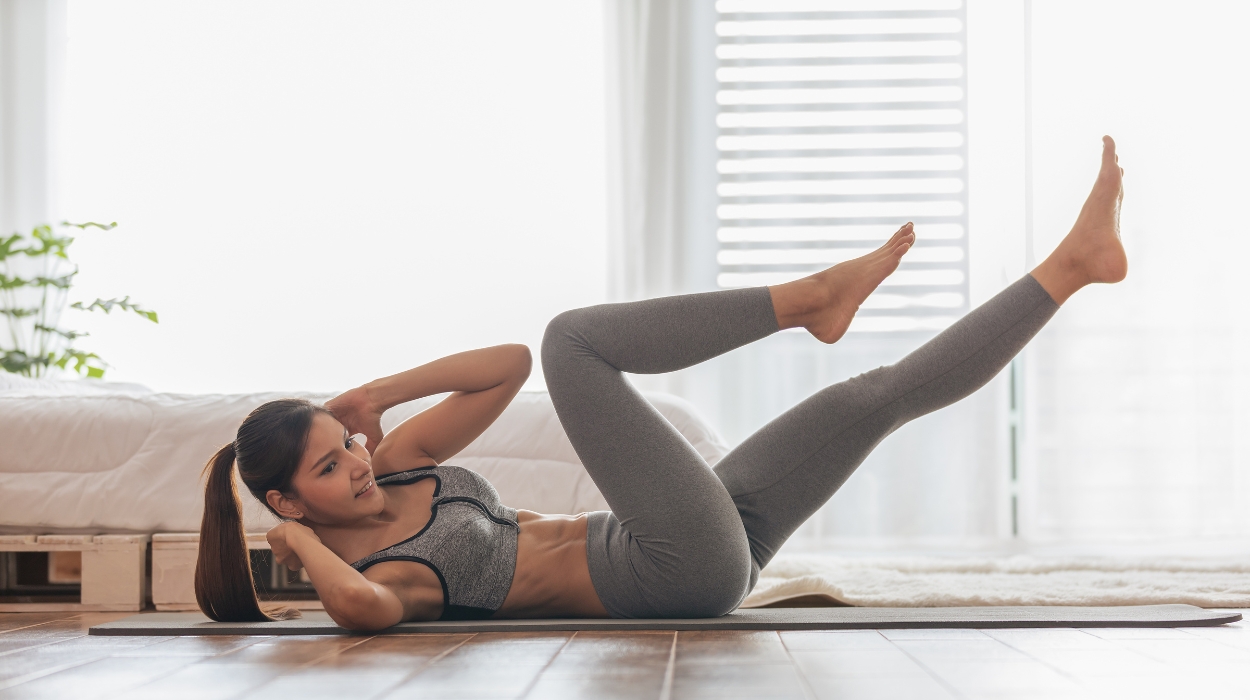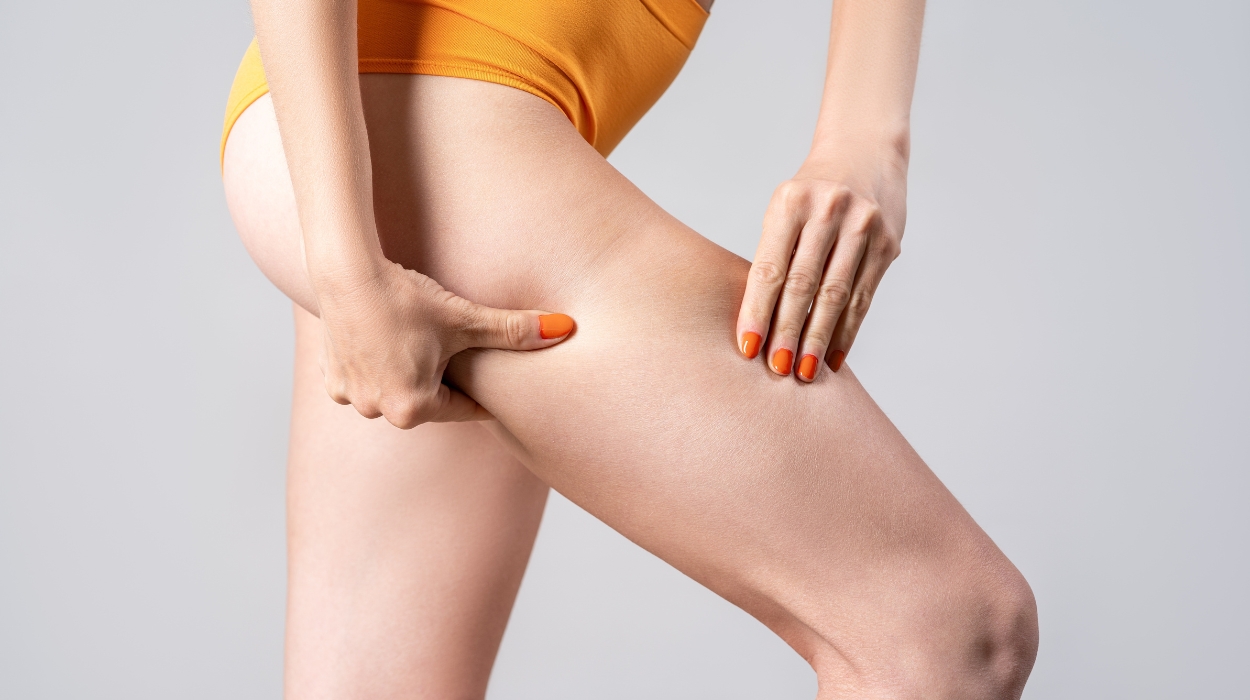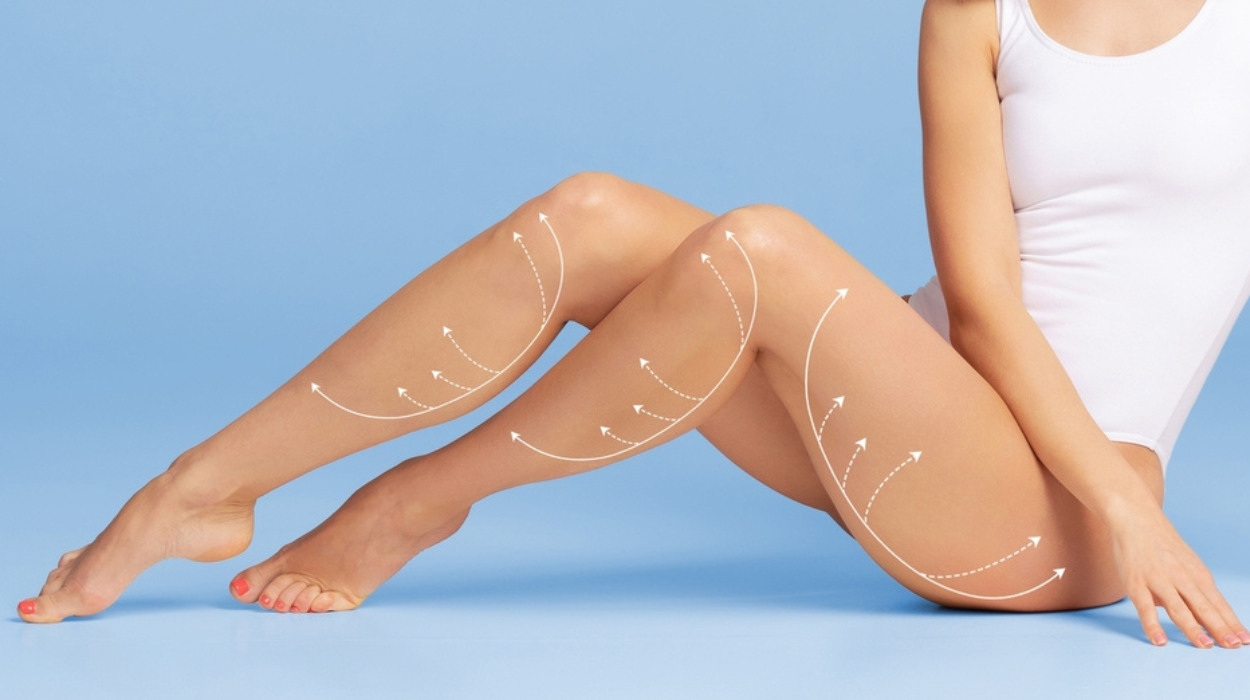An often overlooked but equally important part of the path to weight loss is losing leg fat. We usually think of the bulge we want to shed from our waist or plan to tone up our arms, but the legs are just as important. Knowing how to lose leg fat is crucial because leg fat has been connected to abnormal cardiometabolic parameters[1] relating to insulin resistance, diabetes, and dyslipidemia.
There are many factors to address concerning weight loss, such as your physical activity level and your diet. For example, carbohydrates are a vital macronutrient and a great energy source, but excessive intake often leads to weight gain. Understanding the balance can help you determine the perfect number of carbs to eat per day to promote effective weight loss.
Spot reductions aren’t very feasible, so it’s important to understand the implications of leg fat mass on body composition and overall health and fitness.[2]
How To Get Rid Of Leg Fat: 5 Tips To Get Skinny Legs
- Aerobic exercises.
- Strength training.
- High-intensity interval training.
- Dietary changes.
- Sleep and stress management.
Effective Ways To Lose Fat And Get Slimmer Legs

There are lifestyle habits like diet, exercise, and sleep that promote losing leg fat.
Aerobic Exercises
One way to lose leg fat is to do aerobic exercises[3] that target the leg muscles. You have the freedom to do these exercises at a moderate intensity or make adjustments according to your needs. This will increase the calories you burn and support your heart rate.
Some effective activities include swimming or going on a brisk walk. In addition to these methods, establishing a consistent routine for running or engaging in dance-based exercise can support total body fat loss.
Additionally, you can do cycling exercises in a group or at home, which helps to stabilize your knee strength and protect your knees from strain. Your quads and other thigh muscles will be strengthened, as well as your glutes, hamstrings, and calves.
Strength Training
If you’re looking for something more intense as you discover how to get rid of leg fat, try doing some strength training.[4] This exercise, especially if it entails resistance training, can enhance your strength and build up your muscular endurance. Using resistance bands and weights can encourage reductions in body fat and nurture lean body mass, contributing to toned, lean legs.
When considering losing weight in the legs, think of tissue and mass. Training that involves deadlifts, hamstring curls, or leg presses can induce reductions in total body adipose tissue. There is also an advantageous impact on lean mass and bone mass in the legs and abdomen.
If you’re searching for how to lose leg fat fast, take note that physical change takes time. Leg-focused training can lead to muscle-building and reductions in the thickness of subcutaneous fat if you are consistent and patient. You are also likely to see changes in your entire body[5] as you work the lower body, and this is beneficial since subcutaneous fat comprises the majority of fat within the body.
High-Intensity Interval Training
A great way to work on your inner thigh fat is to engage in high-intensity interval training or HIIT. As we discussed previously, spot reduction isn’t attainable, but you can achieve weight loss consistently throughout the body by way of the fat-burning benefits of HIIT.
Not only is HIIT a promising mechanism regarding how to lose thigh fat, but you will also see improvements in your lower body strength.[6] Your skeletal muscle mass will be sustained, and you can see greater strength and capabilities in the function of your lower limbs.
Being consistent with HIIT workouts can result in overall body fat reduction,[7] translating into slimmer legs and greater performance in the long run. This pertains to both functional movements like climbing stairs and physical activities like cycling.
To address your thigh fat, try some HIIT exercises that will target your thighs and provide a great leg workout. Some exercises to try include jumping squats, burpees, jumping lunges, and broad jumps.
Dietary Changes
Another great way to lose leg fat is to eat fewer calories.[8] Eating less can be one way to keep your weight down. When you take in fewer calories by eating fewer processed foods and more fiber from whole grains and fresh produce, your body will need to use stored fat as its energy source.
To do this, try changing the contents of your diet. Lean meats like turkey or chicken breast can be prepared with spices and a side of fruits and vegetables to make a nutritious and tasty meal. Adhering to a plant-based diet while reducing your intake of sugary foods and snack items and restricting the consumption of red meats can support your weight loss.
A healthy diet is key to maintaining an adequate energy balance and losing excess weight. This is important as you burn calories through exercise and take in fewer calories from the diet. Nutrient-dense foods, like green vegetables, are beneficial because the fiber keeps you feeling full, and the nutrients improve metabolic health, combatting weight gain as a result.
You can also use a supplement in addition to your diet to optimize your overall health. Supplements that contain natural ingredients that have anti-inflammatory and antioxidant properties can be suitable for weight management and bolstering metabolism if your diet is inadequate. With suppressed hunger and cravings curbed, you’ll be less inclined to overeat, giving way to overall weight loss, which helps to slim your legs as well.
Sleep And Stress Management
We can’t discuss losing fat in the legs without discussing important lifestyle facets like sleep. Believe it or not, getting a good night’s sleep and managing your stress response are great methods to manage your weight and can support fat loss in your legs. By modulating hormonal balance, your circadian rhythm, hormone responses, and metabolic influences on weight will all be in sync to promote weight loss.[9]
Meditation and deep breathing exercises may seem like an unconventional mechanism, but these methods can be helpful regarding how to lose leg fat without exercise because they can encourage mindfulness with eating habits.[10] Chronic stress is associated with weight gain and cravings for refined carbs like potato chips, pizzas, and other snack foods.
An adverse relationship between chronic stress and diet can disrupt the hypothalamic-pituitary-adrenal axis, which impacts body fat. It can also interfere with the hunger hormones, ghrelin, and leptin, that activate hunger and satiety. If you don’t get enough sleep, ghrelin levels may increase and lead to an overactive appetite.
Avoiding screen time and winding down before bed, as well as sleeping at a reasonable hour, can usher in a healthy sleep environment. This will get your circadian rhythm on track[11] and help to keep your weight down, resulting in your entire body being positively impacted by these effects.
What Causes Fat In Your Legs?

Obesity
Fat in your legs is often caused by obesity. When you consistently consume more calories than your body needs to maintain a healthy weight, it accumulates stored fat. An increase in adipose tissue can lead to fragile bones[12] as well.
Addressing obesity has been noted as an important aspect of reducing leg fat. If your total body fat is reduced, this can also apply to your leg fat. This supports total fitness and health.
Peripheral Artery Disease
Peripheral artery disease[13] is a type of cardiovascular disorder that is characterized by fat accumulation in the arteries. This disease often impacts the legs, which results in fat buildup in the legs. This is often associated with hypertension, smoking, and metabolic syndrome.
We’ve previously discussed cardio and aerobic exercises, and these activities that benefit cardiovascular health may be useful here. This may alleviate the buildup within the arteries and can alleviate abnormalities with leg fat.
Lipedema
Many women are affected by a type of fat accumulation called lipedema.[14] The origins may be due to genetic factors or excess lymph fluid that has difficulty draining. Compression and drainage massages, beta-adrenergic agonist medications, cortisone, diuretics, flavonoids, and selenium may modulate this. It cannot be managed by lifestyle modifications or a decrease in calories.
Is Leg Fat Hard To Lose?
It can be difficult to lose leg fat, depending on your health status and dietary habits. Exercise frequency and caloric deficits may determine how slowly or quickly you lose leg fat, as well as how much fat you lose.
People often rely on liposuction and injections or fat freezing to get rid of fat, but it’d be most effective to try natural measures like diet and exercise.
Conclusion
Many people wish to get rid of excess fat on their legs, which is more than possible with consistency and patience. Easing the weight bearing on your legs can help to protect your bones from osteoporosis and reduce the side effects of obesity.
Engaging in cardio will help you achieve weight loss, lower body fat percentages, and bolster metabolism during the workout and afterward. An additional benefit is appetite regulation, as the hormonal changes experienced after the exercise can dampen hunger, stopping any cravings in their tracks. Resistance training is also essential for strengthening the muscles of your lower body.
Maintaining a calorie deficit will be important for your fitness goals, and you can do so by boosting your physical fitness while eating less. Try to focus on nutrient-dense foods, increased fiber and fluids, and lean protein sources.
Whether you want to know how to reduce thigh fat at home or in a gym, an exercise routine, a nutritious diet, and minimized stress levels can help you achieve your goals.
Frequently Asked Questions
Yes, it’s possible to slim your legs. By working to get rid of excess subcutaneous fat, your overall body fat will be reduced, including your leg fat. This can diminish the threat of inflammation and other metabolic disorders.
When seeking to lose leg fat, women can do lower body exercises like squats and lunges and eat in a caloric deficit. This is of important note to women because hormonal changes throughout life can alter fat mass.
Many people want to know how to get skinny legs quickly, but everyone is different, and changes don’t happen overnight. Consistency will lead to results after a month or two.
Running is a great way to slim your legs, as it is an efficient way to burn calories. Consistently run a few times a week to see results.
 Evidence Based
Evidence Based
